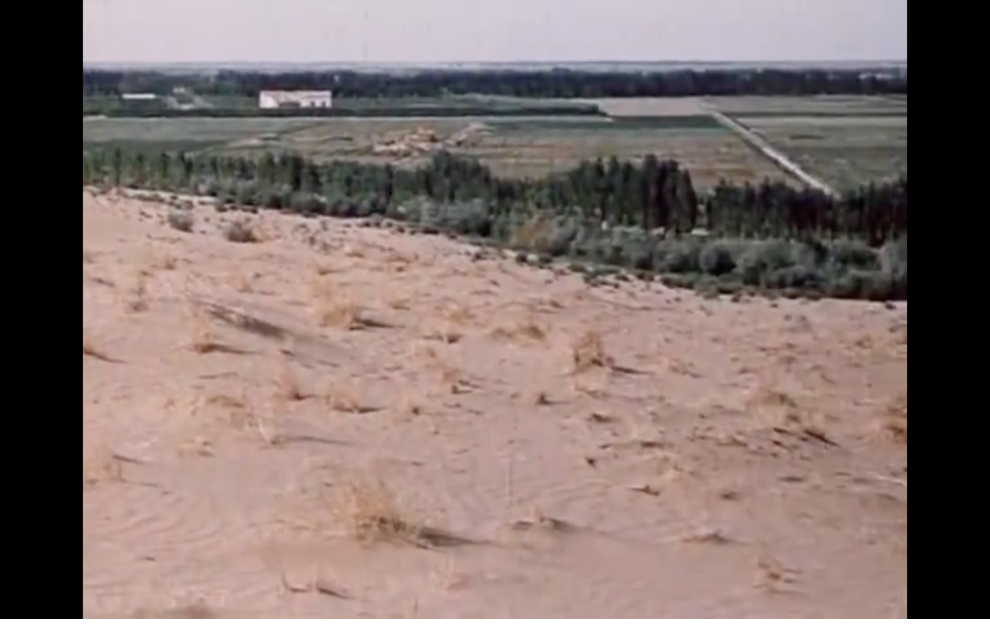PAST TALKS 2023
30 May 2023
DocTalks x MoMA
Interiors Turning Off and On
JIA WENG
Yale University
Respondent: Ruo Jia, Pratt Institute & Harvard University
![]() China International Trade Center, Thomas T. K . Zung and Shoji Sadao, 1986–1989. From Thomas T. K. Zung, ed., Buckminster Fuller: Anthology for the Millennium, (Carbondale, Illinois: Southern Illinois University Press, 2014).
China International Trade Center, Thomas T. K . Zung and Shoji Sadao, 1986–1989. From Thomas T. K. Zung, ed., Buckminster Fuller: Anthology for the Millennium, (Carbondale, Illinois: Southern Illinois University Press, 2014).
DocTalks x MoMA
Interiors Turning Off and On
Environment Valves, Air-borne Architecture,
and Special Economic Zones in China,
1979–1989
JIA WENG
Yale University
Respondent: Ruo Jia, Pratt Institute & Harvard University
 China International Trade Center, Thomas T. K . Zung and Shoji Sadao, 1986–1989. From Thomas T. K. Zung, ed., Buckminster Fuller: Anthology for the Millennium, (Carbondale, Illinois: Southern Illinois University Press, 2014).
China International Trade Center, Thomas T. K . Zung and Shoji Sadao, 1986–1989. From Thomas T. K. Zung, ed., Buckminster Fuller: Anthology for the Millennium, (Carbondale, Illinois: Southern Illinois University Press, 2014).Although Buckminster Fuller’s work has been studied extensively, scholars have rarely examined how his ecological thoughts operated as they traveled outside the Euro-American context. This paper follows Fuller’s ecological projects to China’s Economic Zones. Connected to the global economy through transportation, telecommunication, and environmental control infrastructures, SEZs are enclaves with relaxed labor, environmental, and trade regulations dedicated to promoting export. As the authority of the Shekou Industrial Zone, the first SEZ in China struggled to provide built environments for Foreign Direct Investment. They contacted Fuller for design studies of floating cities and geodesic domes. Situating these projects against Fuller’s broader theoretical account of ecology and world economy, this paper investigates how concepts like environmental valves and airborne economy materialized through the infrastructural developments in Shekou. Fuller’s idea of turning architecture into subscribable environmental services turning off and on like valves and his celebration of airborne transportation technologies that communicate and deposit economic regimes around the world indicate a planetary interior catered toward the privileged neoliberal subject—or World Man, to use Fuller’s term. In explaining and unpacking why both the Chinese SEZ authorities and Fuller, coming from opposite camps in the Cold War, shared mutual political and economic goals, I argue that Fuller’s information-driven project of ecological redesign was a neoliberal one from its inception. It inherited, even if inadvertently, the mechanism of control and conquest from colonialism. The alignment between Fuller and China was only based on misunderstandings. The tension between sovereignty and property, ecology and economy, individualism and collectivism, contained by the zones, culminated in political upheavals in the late 1980s, eventually concluding Fuller’s collaboration with the SEZs, leaving projects—such as China International Trade China—forever on paper.
***
Deserts, Reclaimed:
On China, Territory, Agriculture
and Geopolitics
ISABELLE A. TAN
Princeton University
Respondent: Samia Henni, Cornell University

Frame taken from footage panning left to right, first showing young crops grown through flooded irrigation and then an arid grassland, Army’s Reclamation and Battle Song (1965)
In 1965 a Chinese state-run film studio released a documentary Army’s Reclamation and Battle Song (军垦战歌) dedicated to the work of the Xinjiang Production and Construction Corps (新疆生产建设兵团) in the autonomous region. The Corps modeled a means and mechanism for shaping agricultural subjects and the “desert” for a new socialist state. This paper analyses the documentary to consider the emergence of an agricultural-military-communication complex specific to Chinese political ecology in the 1950s and 60s. Like most state-produced media of the period, Army’s Reclamation and Battle Song coerces labor, subjectivity, and environment into legibility as a condition of Maoist ideology. Individual persons and their landscapes bear the burden of this representation. In this optics of visibility, both are forced to stand-in for abstract “socialist” and modernist promises constituted by facile binaries between marginal and fertile soils, revolutionary and backward forces, the interior and the periphery, and the rural and urban. In this writing, I offer a wayward way of witnessing the relations of Han Chinese and Uyghur, Kazakh, and Turkic people and the built environments they inhabit. This method excavates the actual agricultural practices and techniques seen in the film to unsettle the propagandistic camouflage or trope of tree-plating or greening (绿化) through which settler logics of Sinification are generally understood. I occupy the gap between material beings and bodies and their representations to recover revolutionary possibility while attending to the persistent wounds subjecting human and non-human agency to the same degraded condition, always to be reclaimed.